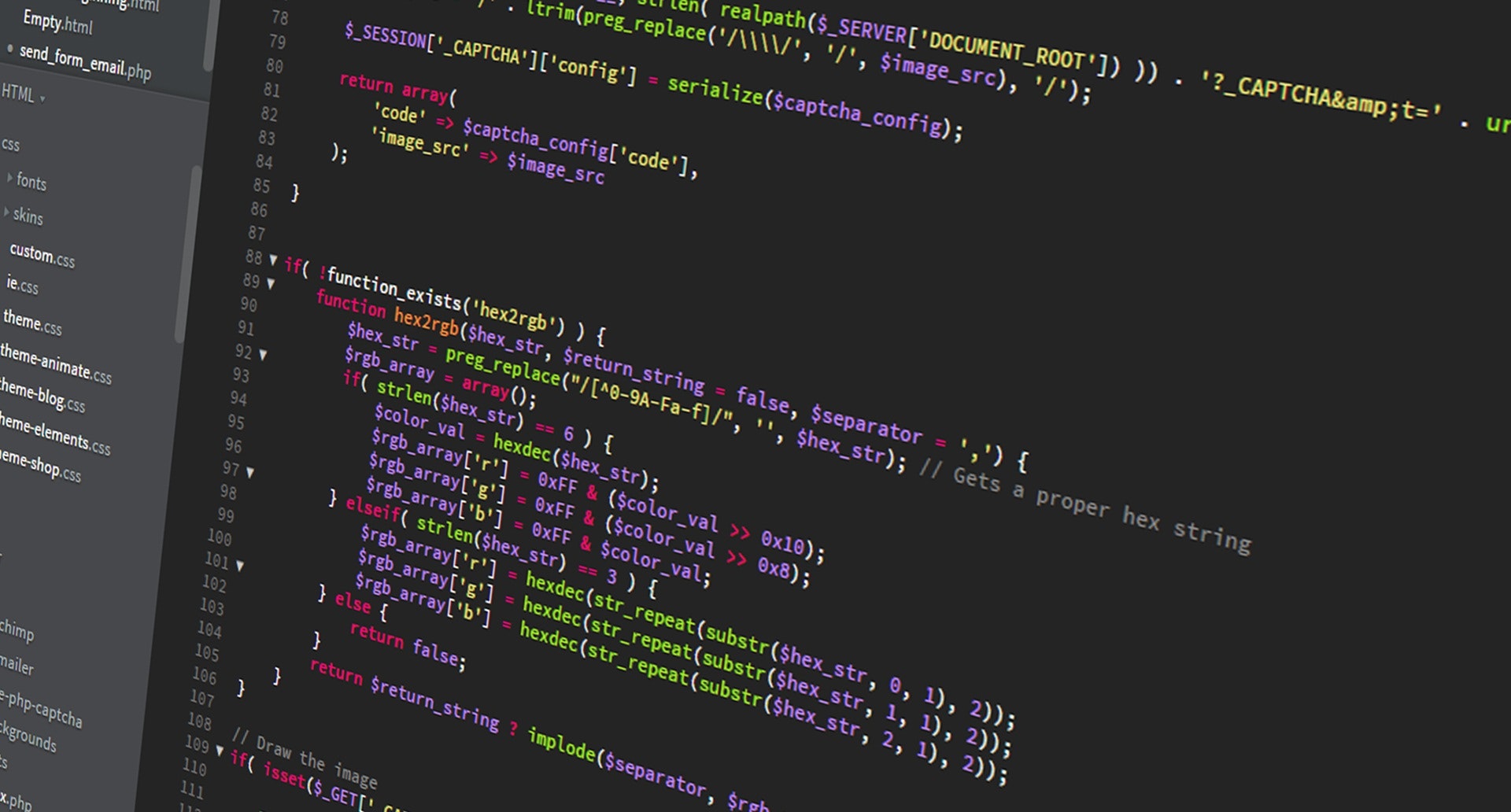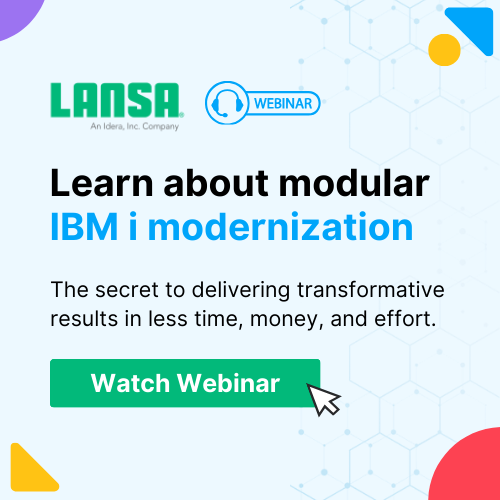IBM i is an operation system that was developed at the end of the last century and gained huge popularity due to its high performance and low cost. IBM i solutions that are built to run on this system have legacy applications perform functions such as: receiving data, processing it, and displaying it on the screen. All data processes were collected in one application. These solutions could deliver higher productivity with modern technologies, which is why IBM i application modernization is an important and necessary process.
Many legacy applications were created to meet specific needs. They may have used different technologies or software development tools. This results in many applications that do not interact with each other and do not integrate well. They cannot exchange data or business logic effectively. In addition, original IBM i solutions also have a green screen user interface which users of today are not as familiar with.
In this article, we will explain why it is important to modernize business functions for a legacy application and how to do it.
Why do you need to modernize IBM i Solutions?
Despite the above challenges when working with legacy IBM i solutions, many companies still widely use them, as they perform mission-critical business functions. However, there are also new applications that use modern technologies and architecture. You may encounter the problem of integrating a legacy application with a new one, as well as the inability to exchange data between them. In addition, legacy applications may not meet the new business requirements that appear in the process of information technology development. Therefore, in order to effectively use legacy IBM i solutions, they should be modernized.
Let’s list other important reasons to perform IBM i application modernization.
- Maintenance of legacy applications is too expensive.
- The lack of qualified specialists who know outdated technologies to maintain the source code.
- The app is running on hardware or operation system that is no longer supported.
- Can not easily update the legacy application.
- Difficulty integrating with other applications.
- Inability to scale to meet growing business needs.
Modernizing legacy applications provides significant benefits.
- Simplifies data access.
- Adapts legacy applications to support new business models.
- Simplifies maintenance.
- Allows you to create new user interfaces for the application.
- Improves the quality of the application.
- Reduces maintenance costs.
What are you modernizing in IBM i Solutions?
The application architecture consists of three layers: the presentation layer, business layer, and data layer. You can upgrade across the entire application, or just at some level.
Presentation layer
The presentation layer is what the user sees while using the application. Modernization of the presentation layer allows you to replace the green screen display with a more graphical one. It helps a legacy application to work like a modern one. At the same time, the logic of its work does not change.
Business layer
The business layer implements the computational aspects of the application, including algorithms and data validation. Modernization at this level requires extracting business rules and inserting them into a separate business rules engine, or turning application functions into web services. This makes it possible to make business rules available outside of the legacy application and to separate the presentation layer and the data layer of the legacy application.
Data layer
In legacy IBM i solutions, data processes and business rules, and algorithms often get mixed up. The process of modernizing the application at this level allows you to separate the database and the application and create new data access mechanisms. This allows data to be more accessible to other applications.

Why do you need to retain the critical business functionalities when modernizing the legacy systems?
Legacy applications are still relevant and reliable. They have been modified to meet the needs of the company and provide proven business functionality. Legacy applications have stood the test of time and continue to perform important business operations. Despite the constantly occurring technological changes, they provide critical business functionality. Creating new applications that will offer the same functionality is a very difficult and risky process.
Reasons for keeping legacy applications:
- They are reliable.
- Legacy applications support critical business operations.
- They manage business processes that provide a competitive advantage.
- The cost of completely replacing a legacy application is too high.
Which techniques are used to modernize legacy IBM i solutions?
There are different techniques for the modernization of legacy IBM i solutions. Using them, you can modernize individual application levels or the entire application. For best results, you can combine several modernization techniques. Below we list some techniques for modernizing legacy applications.
Screen Scraping
This technique allows you to present the old screen in a new graphical format as an application or browser. The logic of the old application remains unchanged.
Adding a New User Interface
This method allows you to expand the content available on the screen and change how parts of the screen are displayed. This is possible through the use of scripts that recognize screens, their purpose, and content. This allows you to turn the original screen content into a new presentation. Processes and events in the legacy application remain the same.
Exposing Business Functions as Callable Services
This modernization method examines legacy applications and defines business functionality. After that, you should create web services that implement business functionality. This allows you to use business functions from legacy applications in other programs by calling a web service.
Migrating the Application
Migration is a technique that allows you to move blocks of functionality from a legacy application to other ones. An application migration applies an update to business functions, not to the entire application. You can migrate only certain functionalities while keeping critical ones.
Re-hosting or Outsourcing the Application
Re-hosting allows you to migrate legacy applications to a different computing platform. At the same time, they work without changes. The re-hosting technique allows you to abandon old equipment and operating systems.
The outsourcing method is the transfer of the operation, maintenance, and updating of the application to another company.
Rewriting the Application
In Rewriting, developers build new applications with modern technologies using the functions of the legacy system as a guide. Using this technique, you can preserve critical legacy functions, but with modern technologies.
Replacing the Application
Replacing the application means retiring the legacy application and purchasing a new one. Legacy business functions will not be retained, and data is the only part of the legacy application that is retained by the new one.
How to modernize IBM i Solutions with LANSA?
LANSA provides a powerful set of cross-platform tools for the migration of legacy applications. Using these tools, you can easily update, port, or reuse your applications without rewriting them. LANSA offers solutions which are easier to use and learn than IBM i languages like RPG.
Let’s list the tools that LANSA provides.
- aXes allows you to modernize applications at the presentation level and easily convert legacy 5250 applications into web pages without the use of code.
- Visual LANSA allows you to create new rich web applications with full built-in integration with IBM i.
- RAMP allows you to create new applications from scratch while using the logic of legacy ones and adding new features.
- LongRange allows you to create mobile applications for IBM i solutions, while using all the features of modern mobile devices such as a camera, scanner, GPS, etc.










